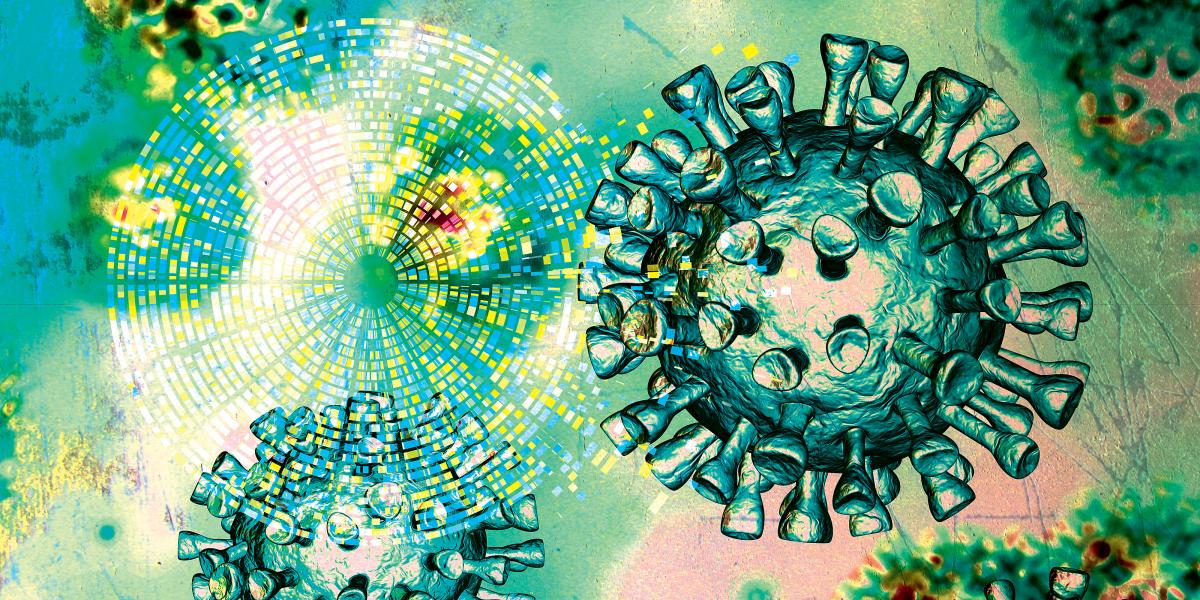Clues to COVID-19 Severity May Lie in Our Genes
Some epidemiologists believe human genetics plays a role in who gets sick and how sick they get.
In her hunt for what makes the novel coronavirus so deadly, Priya Duggal is looking in a most unusual place: human DNA.
Historically, researchers have focused on pathogens to understand the diseases they cause. But the pathogens themselves can’t always explain why two people with the same disease can have very different outcomes. Take COVID-19. While potentially half of all those infected don’t have any symptoms, 20% of all cases need hospital care. Around 1% to 3% of all symptomatic patients will die, according to data from the CDC on early U.S. coronavirus cases. Many of the sickest patients are older and have multiple underlying conditions, such as hypertension, diabetes, and cancer—exactly who you’d expect to have a more severe illness. But a small number of patients who die are young and healthy, with no known risk factors.
This variability isn’t just in age, either. Scientists are seeing a lot of heterogeneity in terms of symptoms, severity, and recovery time in people infected with COVID-19. Part of that difference could be caused by genetics, says Duggal, PhD ’03, MPH ’98, an associate professor in Epidemiology.

To understand these differences, Duggal and colleagues at sites around the U.S. are conducting a snapshot analysis of 500 young adults hospitalized for COVID-19 who don’t have other underlying conditions and 500 nonhospitalized controls who were infected with SARS-CoV-2 but didn’t develop symptoms. By studying the young and otherwise healthy, she hopes to increase her odds of identifying genes that might make someone more likely to develop life-threatening illness. She hopes her efforts will help scientists better understand the biology of SARS-CoV-2 infection and leverage these insights to develop therapeutics that target the proteins made by the host genes she identifies.
Duggal hopes her efforts will help scientists better understand the biology of SARS-CoV-2 infection and leverage these insights to develop therapeutics.
This approach has been used before: HIV scientists discovered that mutations in a gene called CCR5 could make someone immune to HIV. They used this discovery to develop an antiretroviral drug, maraviroc, that blocked the interaction between HIV and CCR5. When Duggal learned about this strategy as an MPH student at the Bloomberg School in 1997, she wanted to do something similar for other infectious diseases. Using a long-term study on individuals with hepatitis C, Duggal began to search for genetic variants associated with the ability to clear the virus before infection became chronic. She also began investigating the 10% of impoverished Bangladeshi children who escaped infection by Entamoeba histolytica that caused repeated diarrheal disease in the other 90%.
Advances in genetic sequencing technology have allowed Duggal to comb through genetic markers across the entire genome rather than confining her search to a specific region. In both her work on hepatitis C and on diarrheal disease, Duggal was able to identify key genes that impacted a person’s chances of getting sick, although these findings haven’t yet led to new treatments. Now, she wants to take this same approach to understand COVID-19.
Duggal is focusing her efforts on young adults hospitalized with COVID-19, as she believes that these individuals are more likely to be genetically susceptible to the virus. Duggal believes that certain genetic variants might help explain why some individuals get so sick even without any risk factors.
“We don’t have clinical answers for [these] things, and we’re hoping genetics offers answers to some of these questions,” Duggal says.
